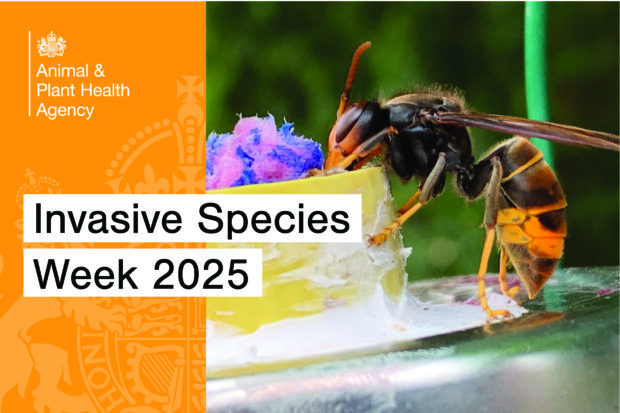
The Yellow-legged Hornet (YLH), also known as the Asian Hornet, is an invasive non-native species which arrived in France in 2004 and subsequently spread throughout Europe before its first detection in the United Kingdom in 2016.
From 2016, to 2022 APHA’s National Bee Unit (NBU) dealt with one or two sightings and nest finds each year. But in 2023, the number of nests we found and destroyed increased significantly to 72. This prompted us to include ‘spring queen trapping’ as part of our tactics to support the eradication policy and improve monitoring.
YLH share the same life cycle as other Vespa species, like our own native European hornets and wasps. Mated queens emerge from hibernation in spring, feed themselves, build a small initial nest, lay a few eggs, and feed and tend to the larvae. Once these young ‘worker’ YLHs emerge after approximately 30 days, they take on the nest building and feeding duties for the subsequent batches of offspring. This continues throughout the summer, and both the number of hornets and nest sizes rapidly expand. As summer draws to a close, the queen lays eggs that develop into drones (males) and new queens. Before this stage, all hornets in the nest are non-reproductive, but later in the season, they leave, and after mating, the males die. The newly mated queens, of which there can be several hundred, will hibernate close by after being fed a rich diet to see them through this period. They will then emerge in the spring to start the cycle again.
Recent research from France has shown that during the course of a season, a single YLH nest can consume over 11 kilograms of insects, including bees, wasps, other pollinators and spiders. This can have a devastating effect on the local biodiversity as the YLH have no natural predators and can expand their territories rapidly year-on-year. Honeybees are a particular favourite prey for YLH, and make up around 40% of their diet.
During the nine-week spring trapping campaign in 2024 over 600 traps in high-risk ‘hotspot’ areas were deployed and over 14,000 trap checks were carried out by over 60 inspectors from across the agency. 13 queen YLH hornets were captured in these traps, and a further six reported from members of the public and beekeepers, who were encouraged to participate responsibly near to the hotspot areas. The hotspots were predominantly in the southeast counties of Kent and Sussex, but traps were also placed around nest sites in Yarm (Yorkshire) and Plymouth (Devon).
The traps are modified by adding 3.5 - 6 mm holes in the side wall. These holes allow smaller non-target insects to escape. However, our native European hornets are bigger than YLH, so it is essential to check the traps regularly to release these.
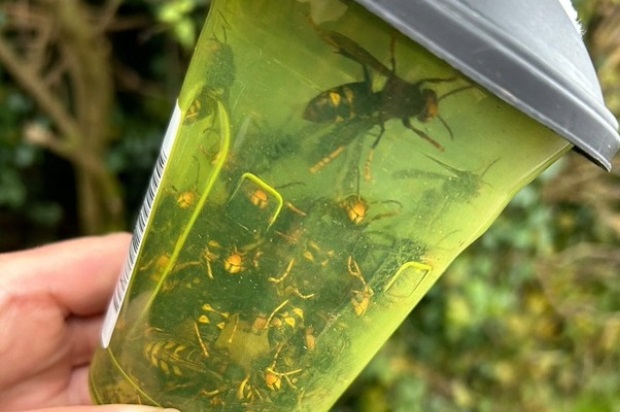
A bespoke Geographic Information System mapping tool is used as an application on mobile devices. It allows placement of the trap locations and their subsequent checking and maintenance to be digitally recorded and submitted in the field. It also allows photos and barcodes to be uploaded along with YLH sample details. All traps are barcoded as they are deployed, and any samples are also barcoded linking individual samples to trap locations. Typically, an inspector would visit, check and maintain approximately 40 per day.
Following the 19 queens captured in the spring of 2024, 24 nests were found between July and October. All nests, once the hornets have been killed, are removed and sent for laboratory testing to determine relatedness and viability. DNA analysis of these nests and individual YLHs showed that two nests from 2023 went on to produce a nest within 5km in 2024. This is the first evidence that queens have successfully mated, over wintered and built their own successful nest the following year.
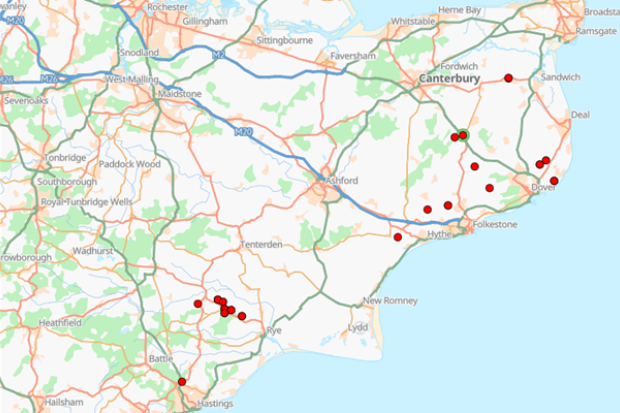
The 2025 spring trapping campaign followed a similar model, operating from mid-April to early June in high-risk hotspots defined after the 2024 nests had been analysed. During this period, six inspectors per day, seven days per week will be deployed to Ashford in Kent to place, check and maintain traps in East Sussex and Kent under our guidance.
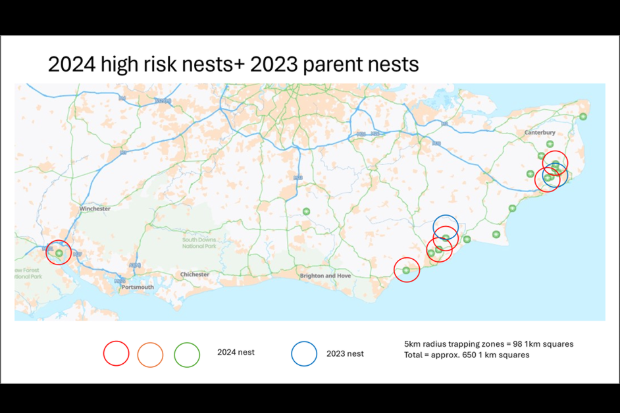
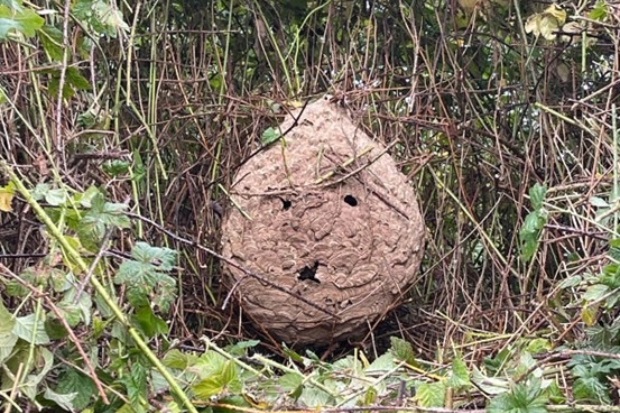
Up to and including the 13th May 2025, 13 YLH have been reported. Whilst there is a higher proportion of natural mortality of these overwintering queens in the spring and early summer due to predation, low fat reserves and the effects of cold weather snaps, each queen caught is potentially one less nest to find and destroy in the summer.
Spring trapping will finish in early June as this is the time the queens stop flying to forage for the nest as the newly emerged workers takeover. Towards the end of July, sightings of worker YLH will start to be reported via the Asian Hornet watch App through to the Centre of Ecology and Hydrology (CEH). These sightings are triaged and any credible reports with a photograph are sent through to the NBU for investigation. Others that are credible, but without a photo, are sent to the British Beekeepers Association (BBKA) Yellow-legged/Asian Hornet Team Co-ordinators for dissemination to local beekeeper volunteers for investigation. During 2024, nearly 30,000 reports were made via the mobile application. Approximately 70 of these were credible and 24 nests were found because of these reports.
Misidentification is a big issue. The name change from Asian hornet to Yellow- legged Hornet, is intended to help to alleviate this, as their yellow legs is a striking feature, along with the dark body and single broad band across the lower abdomen.
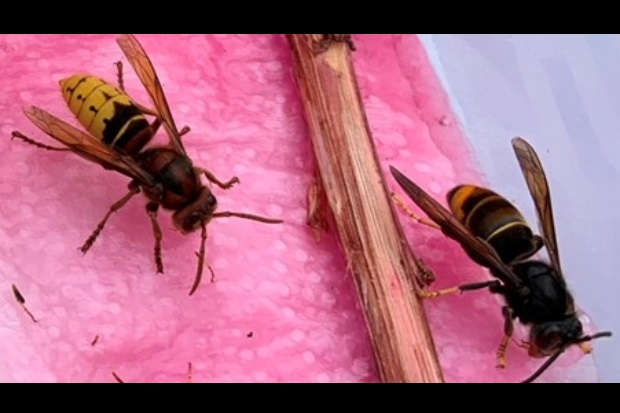
How can I help?
Please report any suspected sightings of Yellow-legged Hornet immediately with a photo via the links below:
- Asian Hornet Watch app for iPhone | App Store
- Asian Hornet Watch app for android | Google Play
- Online recording form | iRecord
You can also report a Yellow-legged Hornet sighting by email. An ID sheet is available to help with identification.
For more information on other ways you can help prevent the spread of invasive non-native species, and to find out more about Invasive Species Week, visit the GB Non-native Species Secretariat website.

Recent Comments